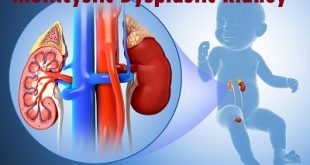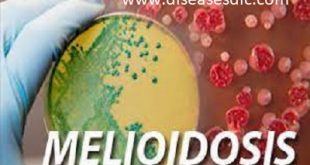Definition
Milk allergy is one of the more common food allergies and affects many people. It’s a result of an abnormal immune response to the constituent parts of the milk from any animal (the most common allergy response is due to alpha S1-casein, a protein in cow’s milk). Milk-induced allergic reactions can range from mild to severe and can lead to anaphylaxis, a potentially life-threatening condition.
Milk allergies are believed to affect up to 3 percent of children under the age of 3. Although it was once believed that these allergies would be quickly outgrown, many recent studies have challenged that notion. One study found that less than 20 percent of children with milk allergies had outgrown their allergy by their 4th birthday. There is hope for milk allergy sufferers though: approximately 80 percent of children do outgrow their allergy by mid-adolescence.
As one of the most common food allergies, people with an allergy to cow’s milk should also be aware there is a good chance they may also be allergic to milk from other animals, including sheep’s and goat’s milk products.
Epidemiology
It is difficult to determine the exact prevalence of cow’s milk allergy due to a lack of a precise criterion for diagnosis. Often the term allergy is interchanged with intolerance or hypersensitivity. In the developed world, the prevalence appears to be 2 to 3% in infants. There is no evidence that prevalence is increasing, and parents perceive cow’s milk allergy more frequently than can be proven with an oral challenge. By the age of 6, the prevalence has fallen to less than 1%.
Types of Milk Allergy
IgE-mediated cow’s milk allergy
In an IgE-mediated allergy, symptoms usually appear within minutes or up to two hours after eating anything that contains cow’s milk protein. This is because the immune system reacts to cow’s milk protein by producing IgE antibodies. These antibodies are produced by immune cells and activate the immune system to release chemicals such as histamines, which then trigger an immediate allergic reaction.
If it is IgE-mediated cow’s milk allergy, you may notice:
- Skin symptoms such as itchy rash, hives and swelling of the lips, tongue or face
- Gastrointestinal symptoms such as tummy pain, vomiting and diarrhoea
- Hay fever-like symptoms such as sneezing and an itchy, runny or blocked nose
- Breathing difficulties
In very severe cases, an IgE-mediated allergic reaction could lead to anaphylaxis — a potentially life-threatening allergic reaction that comes on quickly, affects the whole body, and requires medical help straight away. Fortunately, this type of allergic reaction is uncommon.
Non-IgE-mediated cow’s milk allergy
In non-IgE-mediated cow’s milk allergy, symptoms usually appear after two hours or up to a few days after eating anything containing cow’s milk protein.
Some symptoms of non-IgE-mediated allergy can be similar to those of IgE-mediated allergy. Others might be less obvious and could be mistaken for something other than a food allergy. The signs of non-IgE-mediated cow’s milk allergy could include:
- Colic-type symptoms
- Skin symptoms such as eczema and itching
- Reflux
- Gastrointestinal symptoms such as unusual stools, tummy pain and constipation
Mixed allergic reaction
Some babies with cow’s milk allergy can have mixed allergic reactions, where they have symptoms of both IgE-mediated and non-IgE-mediated allergy. This means that the symptoms could come on quickly after eating or drinking anything with cow’s milk protein and they could also appear after a few days.
Risk factors
Certain factors may increase the risk of developing milk allergy:
Other allergies: Many children allergic to milk also have other allergies. Milk allergy may develop before other allergies.
Atopic dermatitis: Children who have atopic dermatitis – a common, chronic inflammation of the skin are much more likely to develop a food allergy.
Family history: A person’s risk of a food allergy increases if one or both parents have a food allergy or another type of allergy or allergic disease such as hay fever, asthma, hives or eczema.
Age: Milk allergy is more common in children. As they age, their digestive systems mature, and their bodies are less likely to react to milk.
Causes of Milk Allergy
All true food allergies are caused by an immune system malfunction. If you have milk allergy, your immune system identifies certain milk proteins as harmful, triggering the production of immunoglobulin E (IgE) antibodies to neutralize the protein (allergen). The next time you come in contact with these proteins, IgE antibodies recognize them and signal your immune system to release histamine and other chemicals, causing a range of allergic signs and symptoms.
There are two main proteins in cow’s milk that can cause an allergic reaction:
- Casein, found in the solid part (curd) of milk that curdles
- Whey, found in the liquid part of milk that remains after milk curdles
You or your child may be allergic to only one milk protein or to both. These proteins may be hard to avoid because they’re also in some processed foods. And most people who react to cow’s milk will react to sheep’s, goat’s and buffalo’s milk. Less commonly, people allergic to cow’s milk are also allergic to soy milk.
Food protein-induced enterocolitis syndrome (FPIES)
A food allergen can also cause what’s sometimes called a delayed food allergy. Although any food can be a trigger, milk is one of the most common. The reaction, commonly vomiting and diarrhea, usually occurs within hours after eating the trigger rather than within minutes.
Unlike some food allergies, FPIES usually resolves over time. As with milk allergy, preventing an FPIES reaction involves avoiding milk and milk products.
Milk allergy symptoms
There are a wide range of milk allergy symptoms that can involve the gastrointestinal tract, the respiratory tract and the skin.
Gastrointestinal tract symptoms may present as abdominal pain, vomiting or diarrhea and account for about 50% of milk allergy symptoms;
Respiratory tract symptoms can include nasal congestion, coughing and sneezing and typically account for about 20% to 30% of symptoms;
Skin complaints, such as rash, eczema and hives represent about 30% milk allergy symptoms
Infantile colic – prolonged episodes of irritability, fussiness and crying is often attributed to an allergy to cow’s milk protein. However, evidence fails to support that an allergy to cow’s milk is the cause of colic. The exact cause of colic remains unknown.
Other symptoms such as colic, ear infections, migraines and behavioural problems are sometimes associated with milk allergies, but this relationship has not yet been substantiated.
Complications of Milk Allergy
Children with milk allergy may have a higher risk of experiencing the following complications.
Insufficient supply of vital nutrients that can hinder the growth and development of a child. In such cases, along with a well-balanced diet, nutritional supplementation may be necessary for some time to ensure the child’s uninterrupted growth and development.
Allergies to other foods, such as peanuts, eggs, and soy, may occur. Research shows that children with milk allergy are more likely to develop other food allergies. The child may also have a higher risk of developing allergies against airborne particles, such as pollen.
Poor nutrition, due to the absence of milk in the diet, can be mitigated through alternative food items. Parents of children with milk allergy should be alert to the presence of other allergies.
Diagnosis and test
Tell your child’s healthcare provider if anyone in your child’s family has a history of allergies or a milk allergy. Tell him when your child first started having a reaction to milk. Describe the reaction and how long it lasts. Your child may need additional testing if he developed anaphylaxis after he was exposed to a trigger and then exercised. This is called exercise-induced anaphylaxis. A trigger can be any food or a specific food your child is allergic to. Your child may need any of the following:
A skin prick test is used to check for an allergic reaction. Your child’s healthcare provider will scratch your child’s skin and add a small amount of milk protein. He will watch for signs of an allergic reaction, such as hives or swelling.
A sample of your child’s blood may be checked for a reaction to milk protein.
An elimination test may be used if your child does not have an immediate allergic reaction to milk protein. Your child will not eat or drink any milk products for a few weeks. He will then be given a milk product. His healthcare provider will watch for a reaction. Your child may need to have this test repeated every 6 to 12 months to see if he might be able to start having milk.
Treatment and medications
The best way to manage all types of milk allergies and milk sensitivities is to avoid consuming dairy products. While there is no definitive treatment for milk allergy, some of the following measures may be taken to limit reactions:
- Infants who develop milk allergies way before starting on solid foods may be prescribed hypoallergenic infant formula.
- For a life-threatening allergic reaction, treatment includes administering injectable epinephrine, oral or injectable antihistamines, or oral or injectable corticosteroids.
- Treatment of food protein-induced enterocolitis syndrome (FPIES) includes administering intravenous hydration and intravenous corticosteroids.
Milk and milk products may also be hidden sources in commonly eaten foods. In order to avoid foods that contain milk products, it is necessary to read food labels.
Important information about avoiding milk and milk products:
- The words “non-dairy” on a product label indicate it does not contain butter, cream, or milk. However, this does not necessarily indicate it does not have other milk-containing ingredients.
- The Kosher food labeled “pareve” or “parve” almost always indicates food is free of milk and milk products. A “D” on a product label next to the circled K or U indicates the presence of milk protein. These products should be avoided.
- Processed meats, including hot dogs, sausages, and luncheon meats, frequently contain milk or are processed on milk-containing lines. Carefully read all food labels.
| Foods | Allowed | Not allowed |
| Beverages |
|
|
| Breads |
|
|
| Cereals | Any cereal to which no milk or milk products have been added |
|
| Desserts |
|
|
| Eggs | Prepared without milk | Scrambled with milk, creamed eggs, egg substitutes |
| Fats |
|
|
| Fruits | Fresh, frozen, or canned fruits and juices | Any served with milk, butter, or cream |
| Meats, fish, poultry, & cheese |
|
|
| Potatoes & substitutes |
|
|
| Soups | Bouillon, broth, consommé or soups with broth base plain or with all allowed foods |
|
| Sweets |
|
Candy made with milk such as chocolate, fudge, caramels, nougat |
| Vegetables |
|
|
| Miscellaneous |
|
|
Prevention
There are two primary proteins that can cause an allergic reaction: casein and whey. Casein is found in the solid part of milk that curdles, while whey is found in the liquid. Those who suffer from a dairy allergy may be triggered by only one protein or by both.
Not surprisingly, both casein and whey are found in a vast variety of dairy products. And while milk allergy is typically linked to cow’s milk, adverse reactions can also stem from goat, buffalo, or sheep’s milk. Examples of common foods to avoid include:
- Cheese
- Cottage cheese
- Custard
- Cream
- Buttermilk
- Pudding
- Sour cream
- Yogurt
- Milk in all forms (including powdered milk and evaporated milk)
Products that contain milk ingredients and protein can also trigger an allergic reaction, such as foods that are made with dairy, whey, lactose, and casein. Those with a dairy allergy should stay away from these allergy-triggering ingredients:
- Butter, butter fat, butter oil, butter acid, butter ester(s)
- Diacetyl (often found in butter flavoring)
- Rennet casein (milk protein often used in processed cheese or deli meats)
- Tagatose (often used as an artificial sweetener)
- All forms of whey (concentrate, isolate, and hydrolysate)
- Any artificial butter or cheese flavoring
Milk proteins and by-products are present in far more than dairy products, which can make it challenging to avoid allergic triggers. Check the label on salad dressings, baked goods, cereals, donuts, cake mixes, and any canned or processed meats to ensure there are no harmful ingredients.
 Diseases Treatments Dictionary This is complete solution to read all diseases treatments Which covers Prevention, Causes, Symptoms, Medical Terms, Drugs, Prescription, Natural Remedies with cures and Treatments. Most of the common diseases were listed in names, split with categories.
Diseases Treatments Dictionary This is complete solution to read all diseases treatments Which covers Prevention, Causes, Symptoms, Medical Terms, Drugs, Prescription, Natural Remedies with cures and Treatments. Most of the common diseases were listed in names, split with categories.







